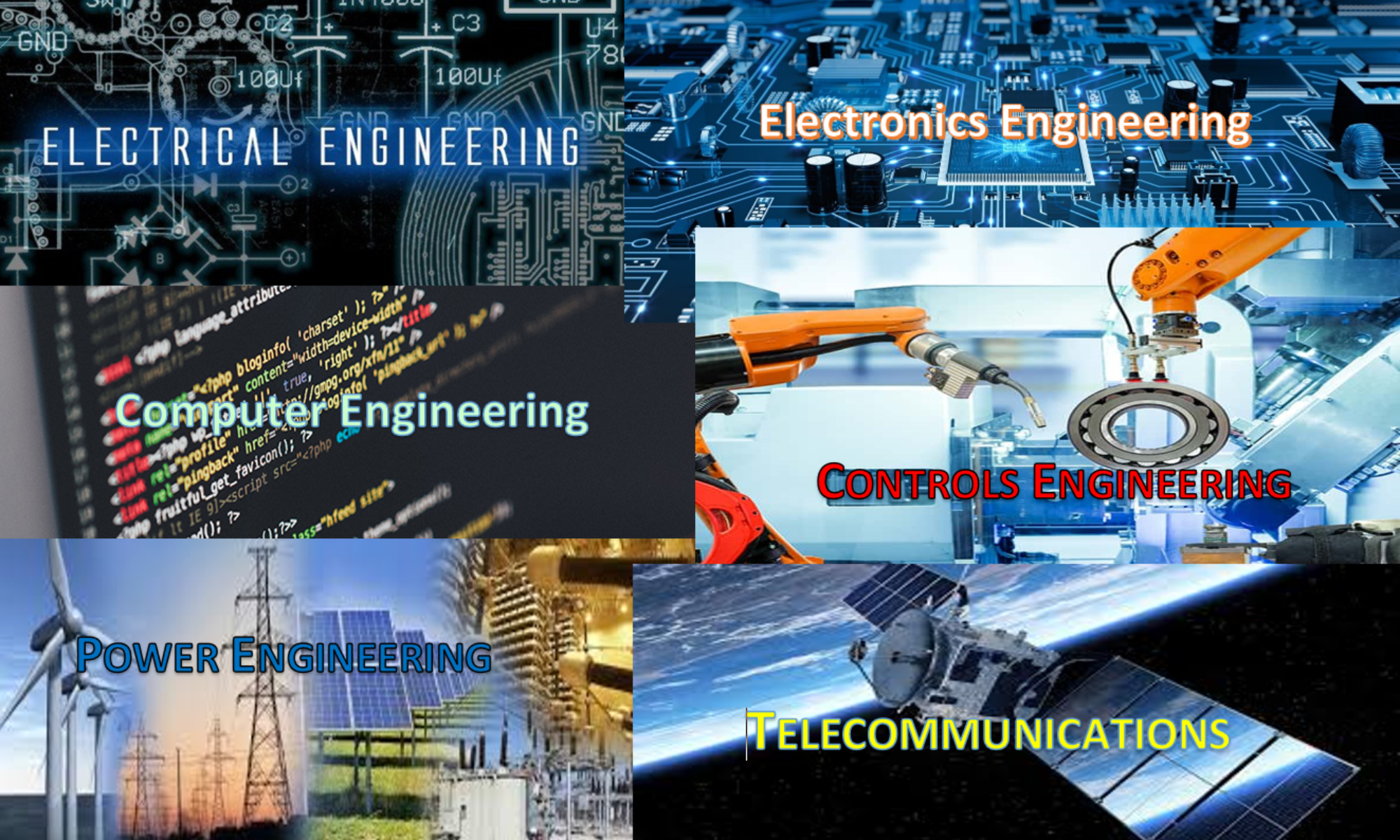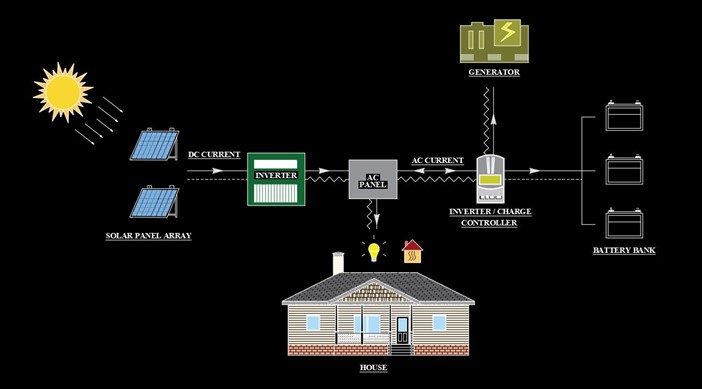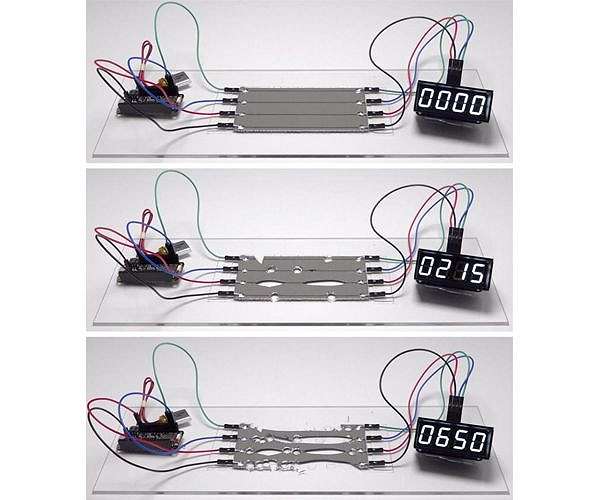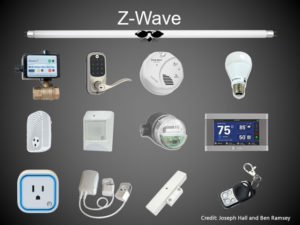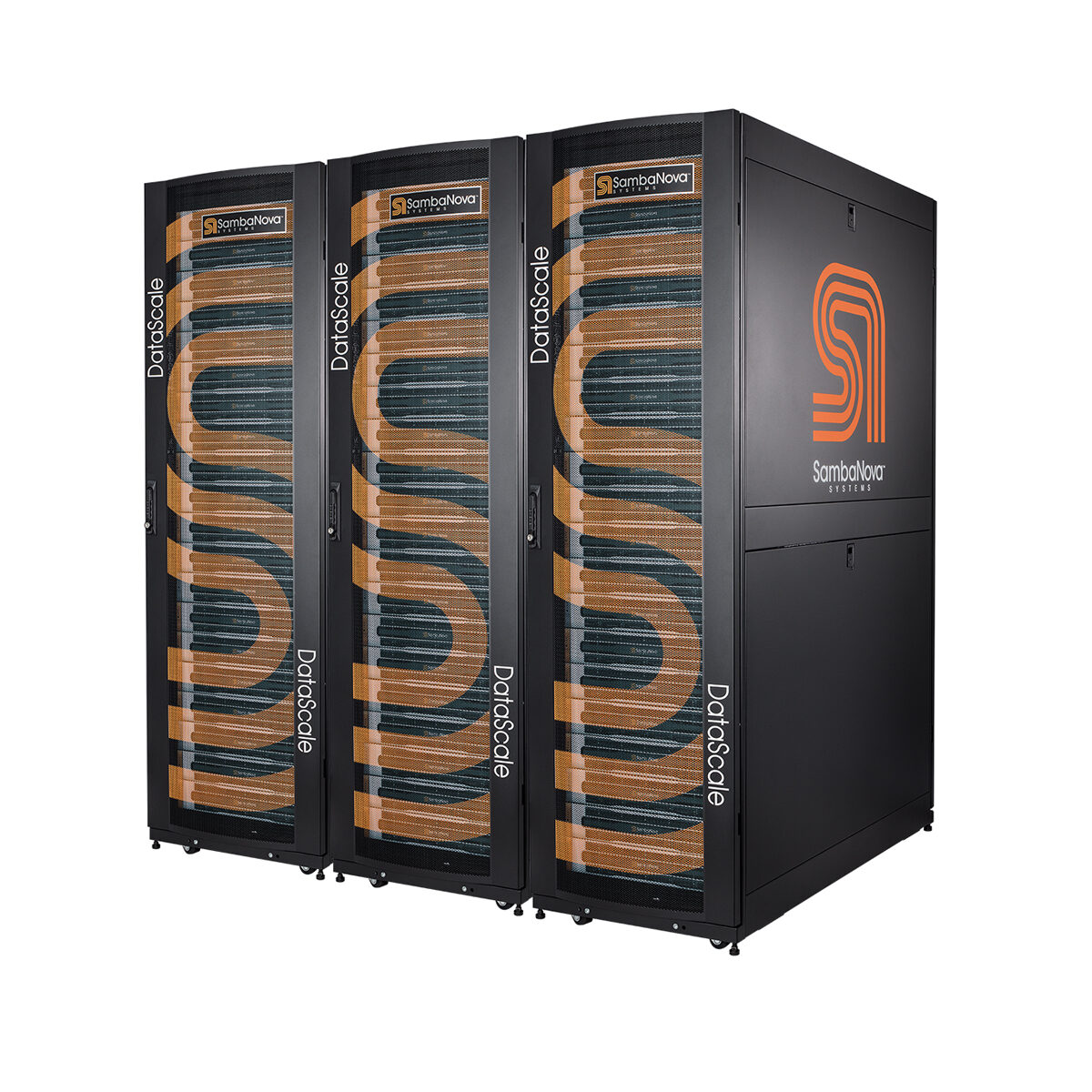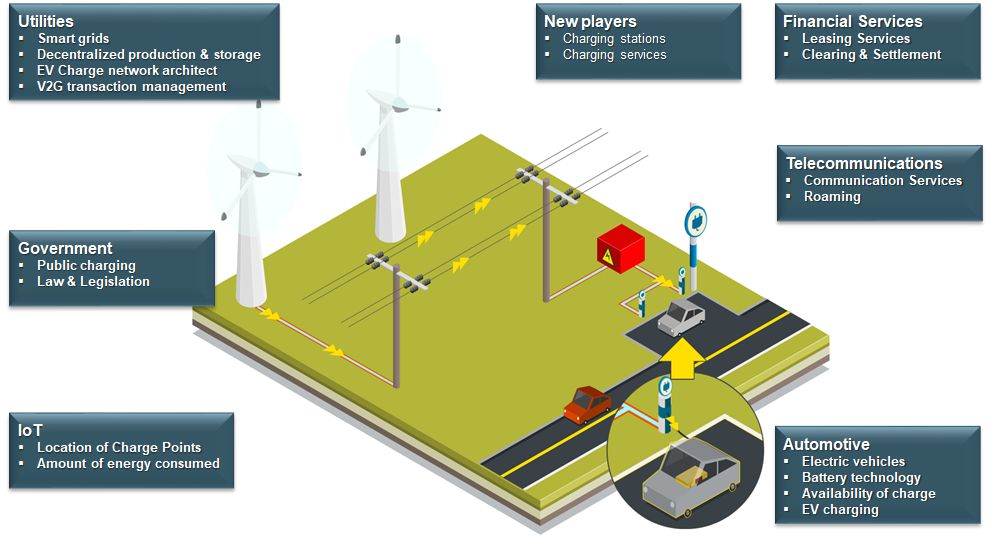Self-healing material a breakthrough for bio-inspired robotics
Science News and Carnegie Mellon University – Many natural organisms have the ability to repair themselves. Now, manufactured machines will be able to mimic this property. In findings published this week in Nature Materials, researchers at Carnegie Mellon University have created a self-healing material that spontaneously repairs itself under extreme mechanical damage.
This soft-matter composite material is composed of liquid metal droplets suspended in a soft elastomer. When damaged, the droplets rupture to form new connections with neighboring droplets and reroute electrical signals without interruption. Circuits produced with conductive traces of this material remain fully and continuously operational when severed, punctured, or had material removed.
Applications for its use include bio-inspired robotics, human-machine interaction, and wearable computing. Because the material also exhibits high electrical conductivity that does not change when stretched, it is ideal for use in power and data transmission.
Researchers Create Lab-on-a-Chip for Quick Infection Testing
All About Circuits – As the pandemic resurges in many parts of the world, researchers have found a way to bring the speed and accuracy of infection testing to mobile devices with a lab-on-a-chip.
A new lab-on-a-chip has been developed by researchers at Imperial College London who hope it can pave the way for low-cost portable diagnostic testing. The lab-on-a-chip (LoC) technology, known as TriSilix, is a “micro laboratory” that can reportedly perform a scaled-down version of the polymerase chain reaction (PCR) test on the spot, presenting its results in just a few minutes. PCR, which detects viruses and bacteria in biological samples, is usually performed in a laboratory, meaning that test results don’t become immediately available.
Each LoC device contains a DNA sensor, temperature detector, and heater so that the testing process can be automated. According to the researchers’ published findings in Nature Communications, a standard smartphone battery is capable of powering up to 35 tests on a single charge.
What is the Z-Wave protocol?
EE World – Smart homes need wireless connectivity, and Z-wave has emerged as the ultimate solution for home automation. The Z-wave protocol is a wireless, radio frequency protocol designed primarily for smart home networks. All the existing wireless communication protocols had one or the other problem. Bluetooth and Zigbee often shortfall of range while Wi-Fi poses its own limitations in a low-power ecosystem. Interoperability has been another major issue as popular wireless standards have different protocols and implementations for different applications. No one solution could cater to the requirements of an automated home. Z-wave is, now, the solution for all those lingering issues.
Z-wave devices are interoperable and can be easily accessed through the internet or a Z-wave gateway. With a range of around 40 meters, a Z-wave network limited to four hops can connect at most 232 devices. Irrespective of their make or application, all devices can have simultaneous two-way communication over the Z-wave network secured using AES. With sufficient range, optimum data speed, AES security, low-power wireless solution, and interoperable protocol, Z-wave is just perfect for home automation. There are now thousands of Z-wave products in the market, serving as intelligent devices for smart home ecosystems.
SambaNova Emerges From Stealth With Record-Breaking AI System
EE Times – SambaNova, one of the AI chip startup “unicorns,” has emerged from stealth mode after three years to announce its first product, a system-level AI accelerator for hyperscale and enterprise data centers and high performance computing (HPC) applications. SambaNova’s business model includes selling various configurations of the DataScale rack-based system, as well as renting them out for a monthly subscription in an offering the company calls “Dataflow-as-a-service”.
Founded in Palo Alto, California in 2017, SambaNova has been in stealth mode until now, though the company has released some details about its “software defined hardware” chip architecture. The startup has raised $456 million in three rounds of funding to date, and is reportedly valued at more than $2.5 billion.
DataScale is built on SambaNova’s Cardinal SN10 reconfigurable dataflow unit (RDU) chip. SambaNova still hasn’t given away much about this chip, with VP product Marshall Choy telling EE Times only that each chip offers “hundreds of teraflops and hundreds of megabytes of on-chip memory with direct access to terabytes of off-chip memories.” Choy argued that SambaNova’s customers, to an extent, do not care about the details of the chip; they are buying or renting the rack-based system which is SambaNova’s first product.
The EV Market Is Accelerating
T&D World – Will utilities lead, follow, or get out of the way?
The electric vehicle (EV) wave has come ashore. EV penetration is transitioning from its embryonic stage to the market growth stage across many transportation industry segments: cars, light trucks, buses, light commercial vehicles (LCVs), even Class-8 trucks (those more than 33,000 pounds). Although some segments are electrifying faster than others in terms of market penetration, overall this change will be the single most transformative event in the transportation sector since Henry Ford invented automobile assembly-line manufacturing. This change impacts everything — how far vehicles travel before requiring refueling (recharging in this case), the time recharging takes, where and when vehicles recharge — the very nature of replenishing the vehicle’s energy reserves. With this change comes opportunities for a new set of players to enter the marketplace, with the most impacted entity, the electric utility. These new market entrants will also bring new business models into a marketplace that is still evolving and will take some time to mature.
Over the past decade, following significant advances by the European Union (EU), upwards of two dozen investor-owned and municipal utilities in the United States have launched significant EV charging network infrastructure pilots. Initially, state governments drove these initiatives to achieve aggressive carbon reduction targets, but now EV charging capability is rapidly expanding into a national priority.
